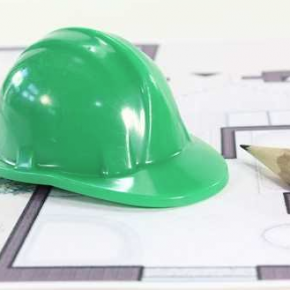
GUEST ARTICLE: How to Keep Safe on a Construction Site
Health and safety is a leading concern for businesses of any kind, and has been since before the formal drafting of legislation in the mid-1970s. While every business premises has its own specific risks to acknowledge and mitigate, it is the construction industry that plays host to some of the most dangerous work sites; according to the HSE, more worker fatalities occurred in construction-related incidents than in any other industry.
There are numerous reasons for which you might find yourself on, or touring, an active construction site. You might be visiting as part of a delegation on a trip to explore partnership, or you might be brought in as an external consultant for a specific part of the wider project plan. Whatever the reason, you might not feel altogether comfortable touring the site without having some advance knowledge on how to conduct yourself.
But construction site managers earn a tidy annual salary for a reason; they have the task of not only managing the working personnel on site, but also enforcing safety measures for both workers and visitors – in service of wider compliance with UK health and safety law. What can you expect from such managers, and what should you know before you find yourself on-site?
Personal Protective Equipment (PPE)
Personal protective equipment, or PPE, is an essential provision on active worksites as a last-resort protection from accidents or injuries. PPE on construction sites commonly comes in the form of hard hats and steel toe-capped boots, with the objective of protecting the head and toes respectively from falling objects and other crush hazards.

There are other forms of PPE that you might be asked to wear by the foreman or site manager, such as masks to mitigate the inhalation of brick and masonry dust. If you are unsure what the PPE protocol is at the site you are visiting, you should make a point of requesting PPE and training in its use; construction businesses are legally obliged to meet your PPE needs at no cost to you.
Safety Prompts and Signage
It is important to remain vigilant on worksites, not in the least to ensure you are fully aware of your surroundings and of the expectations the site has for you. For example, signage is a key part of worksite safety strategy, whether reminding workers to wear PPE or directing attention to nearby hazards.
Following Processes
Signage is also a key indicator for site-specific processes and protocols, which you should endeavour to follow at all times. These processes may seem to promote an abundance of caution, but no steps should be missed or corners cut; risk increases considerably if you stray from standardised processes on-site, whether following managers around the site or handling dangerous materials. Again, you should be taking instruction from the managers on site to ensure you are safe and secure while touring.
Latest news

26th July 2024
Enfield Speciality Doors completes world-class project for Atlas Copco HQ
A rundown office and warehouse building completely transformed into a modern headquarters for Atlas Copco has been fitted with more than 120 internal fire doors from Enfield Speciality Doors.
Posted in Access Control & Door Entry Systems, Articles, Building Industry News, Building Products & Structures, Building Systems, Case Studies, Doors, Interior Design & Construction, Interiors, Posts, Restoration & Refurbishment, Retrofit & Renovation, Security and Fire Protection, Sustainability & Energy Efficiency, Timber Buildings and Timber Products, Wooden products
26th July 2024
Abloy UK launches new white paper
Abloy UK, a leading provider of security and access control solutions, has launched a new white paper.
Posted in Access Control & Door Entry Systems, Architectural Ironmongery, Articles, Building Industry News, Building Products & Structures, Building Services, Doors, Facility Management & Building Services, Health & Safety, Information Technology, Innovations & New Products, Publications, Research & Materials Testing, Security and Fire Protection
26th July 2024
MCRMA Member Profile: David Roy, Director of Roofconsult
David Roy of MCRMA member company Roofconsult has more than 50 years’ experience to draw upon working in the building envelope sector and a unique perspective on how it has changed in that time.
Posted in Articles, BIM, Infrastructure & CAD Software, Building Associations & Institutes, Building Industry News, Building Products & Structures, Building Services, Building Systems, Cladding, Information Technology, Restoration & Refurbishment, Retrofit & Renovation, Roofs, Walls
26th July 2024
Strand: Enhancing Door Functionality and Safety
Craig Fox, Sales Director for Strand Hardware, outlines how door industry professionals might apply door limiting stays…
Posted in Architectural Ironmongery, Articles, Building Industry News, Building Products & Structures, Building Services, Doors, Facility Management & Building Services, Health & Safety, Restoration & Refurbishment, Retrofit & Renovation
 Sign up:
Sign up: